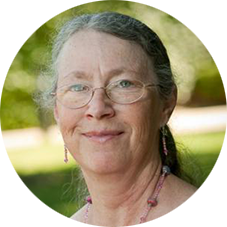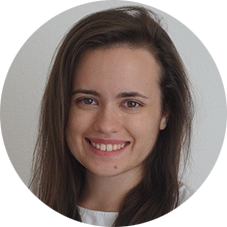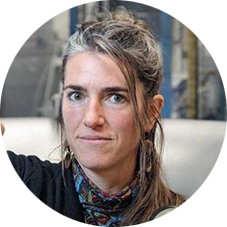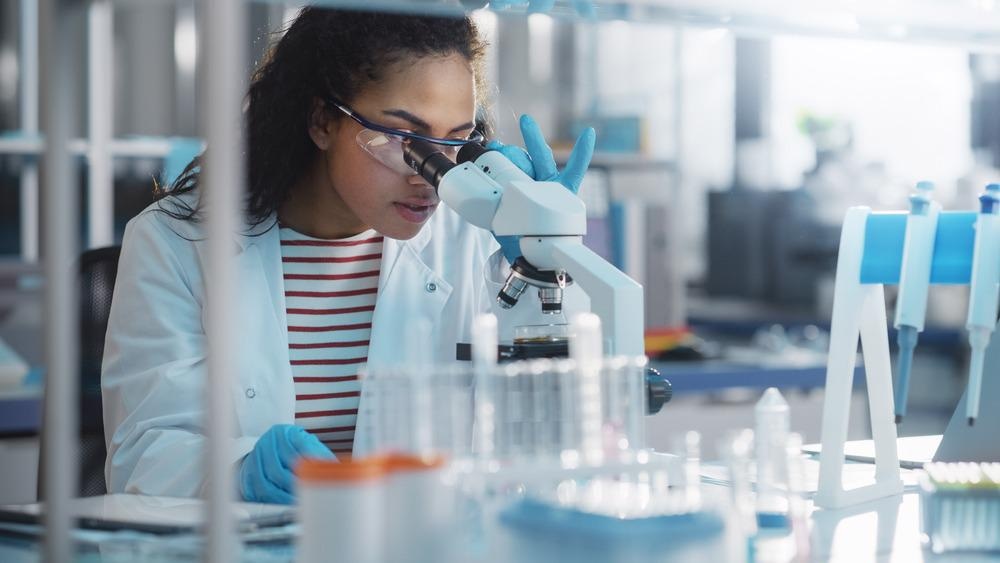Every year, the United Nations celebrates the International Day of Women and Girls in Science. For 2022, the focus is placed not only on recognizing the role women and girls play in STEM as beneficiaries but also as agents of change.

AZoCleantech aims to share science with the world and people who can make a difference. Therefore, this year, we are highlighting a selection of women that are driving innovation in the Clean Technology sector.
We asked each representative the following questions, exploring how science has shaped their career, their thoughts on the future of the field, and the irreplaceable role of women in STEM.
How did you come to be involved in the scientific community, and what advice would you give to young women and girls who are looking to start their careers within the STEM sector?
Linda Gaines - Environmental Scientist/Systems Analyst in Argonne National Laboratory’s Energy Systems division

The elegance of the Periodic Table hooked me. Science made things make perfect sense, so I decided to become a chemist. I initially saw no need for activism about women in science; gender was as irrelevant as a maternity hat, except for positives such as complementary skills based on body type. Then I got told by my boss on a trip that we only needed one wake-up call, and then someone wrote a letter in Science magazine suggesting grants to mothers for child care, and I felt compelled to reply. I mentor young female staff and call out problems when they occur. My advice: You cannot do everything perfectly. There are only 24 hours in a day. Be efficient. Do not buy into the macho work week. Take time for yourself. Identify tasks that you can ignore, skimp on, or delegate, and also those you really want to do right. Make sure your partner is a partner. Demand the respect you deserve.
Molly Morse - CEO and co-founder of Mango Materials, a start-up that converts abundant methane gas into low-cost, high-value, biodegradable materials.
 While pursuing my master's degree, I wrote a paper on the need for sustainable building materials. A professor who read it invited me to stay on as a Ph.D. student. This launched my involvement in the scientific community. For anyone interested in pursuing a STEM career, I would say to start with an area you are deeply interested in and passionate about - read and learn everything you can. If you methodically and diligently pursue your interest while actively sharing your learnings with others, the pieces of your career should fall into place.
While pursuing my master's degree, I wrote a paper on the need for sustainable building materials. A professor who read it invited me to stay on as a Ph.D. student. This launched my involvement in the scientific community. For anyone interested in pursuing a STEM career, I would say to start with an area you are deeply interested in and passionate about - read and learn everything you can. If you methodically and diligently pursue your interest while actively sharing your learnings with others, the pieces of your career should fall into place.
Vaitea Cowan - Featured on Forbes' 30 under 30 list for Energy 2020, and co-founder of Enapter, a company scaling green hydrogen production with its Anion Exchange Membrane (AEM) electrolyzers.
 I got involved in the community after reading the scientists’ warning in the IPCC’s Fifth Assessment Report. Coming from the islands, sea-level rise is an existential threat to my family and so I wanted to be part of the solution. After university, I had the chance to meet an entrepreneur with the vision to replace fossil fuels with green hydrogen. Our mindsets and values aligned, and with the help of a brilliant engineer, we co-founded Enapter.
I got involved in the community after reading the scientists’ warning in the IPCC’s Fifth Assessment Report. Coming from the islands, sea-level rise is an existential threat to my family and so I wanted to be part of the solution. After university, I had the chance to meet an entrepreneur with the vision to replace fossil fuels with green hydrogen. Our mindsets and values aligned, and with the help of a brilliant engineer, we co-founded Enapter.
As for advice, I recommend young women and girls to reach out to the women in science working on topics that make them curious.
We all have time to inspire the new generation and be inspired in return. Moreover, diversity of people and skills will contribute to fighting climate change. You do not have to be an engineer to make an impact - there is a huge need for people who can understand the technology and help bring that understanding to a wider audience.
Nadia Shardt - Postdoctoral researcher at the Institute for Atmospheric and Climate Science at ETH Zurich, investigating ice nucleation in atmospherically relevant systems using microfluidics.
 One of my first introductions to the scientific community was as a high school student during a summer research program organized by Women in Scholarship, Engineering, Science, and Technology (WISEST) at the University of Alberta. I continued to pursue research projects while studying for a BSc in chemical engineering, and I was motivated to gain specialized knowledge in thermodynamics (the study of energy and how it can be transformed) for a Ph.D.
One of my first introductions to the scientific community was as a high school student during a summer research program organized by Women in Scholarship, Engineering, Science, and Technology (WISEST) at the University of Alberta. I continued to pursue research projects while studying for a BSc in chemical engineering, and I was motivated to gain specialized knowledge in thermodynamics (the study of energy and how it can be transformed) for a Ph.D.
My advice would be to pursue your interests and be proactive in seeking out extracurricular opportunities in your community or internships in STEM to launch your career.
Núria Casacuberta Arola - Oceanograprapher at ETH Zurich studying water circulation using radionuclides to understand the role of the oceans in mitigating climate change.
 The best way of being or becoming involved in the scientific community is by being a scientist. I started my Ph.D. in 2005. Since then, I have been doing science, not only as a job but mainly as a passion. The research or scientific focus has changed and transformed from 2005, and with these changes, I also got involved in different projects and with different people. The research I do is about understanding ocean circulation. This means that I have to be in contact with a broad community: from people organizing expeditions, to technical people that help measure our samples, to modelers, etc.
The best way of being or becoming involved in the scientific community is by being a scientist. I started my Ph.D. in 2005. Since then, I have been doing science, not only as a job but mainly as a passion. The research or scientific focus has changed and transformed from 2005, and with these changes, I also got involved in different projects and with different people. The research I do is about understanding ocean circulation. This means that I have to be in contact with a broad community: from people organizing expeditions, to technical people that help measure our samples, to modelers, etc.
The advice I would give to young women and girls is to also follow their passion. Get away from the social pressures of having to fit into certain patterns, but rather look into what they like doing and fight for their dreams to become true. If this is science, then fantastic: we need more women in science.
Science, as well as gender equality, are both vital in achieving the UN's sustainable development goals, yet women still only represent 33.3% of the global research community. What more could be done to help women become more prominent in science in the future?
Linda Gaines - Environmental Scientist/Systems Analyst in Argonne National Laboratory’s Energy Systems division
That is a really tough problem because so many inappropriate gender stereotypes permeate even modern western society. The older I get, the more I recognize the importance of good role models, both in real life and in the media. It is key for women scientists to exist and be visible. Positive action is also important as well; Argonne’s Science Careers in Search of Women and Introduce a Girl to Engineering Day are great examples.
Molly Morse - CEO and co-founder of Mango Materials, a start-up that converts abundant methane gas into low-cost, high-value, biodegradable materials.
Publicize and tell more stories about women scientists and engineers. We often don't do a great job at "marketing" ourselves.
Vaitea Cowan - Featured on Forbes' 30 under 30 list for Energy 2020, and co-founder of Enapter, a company scaling green hydrogen production with its Anion Exchange Membrane (AEM) electrolyzers.
To give one example, in late 2020, we co-founded Women in Green Hydrogen following the lead of Charlotte Hussy. It is an initiative to empower, connect and inject change into our industry. We keep an eye out for initiatives or events that have zero diversity or no gender balance and call them out. There is also power in creating a highly visible body of professional women in such sectors to dispel gender-driven notions of who “fits” in research, industry, cleantech, etc.
As a co-founder, I am always on the lookout for new talent to join us, regardless of gender – and we have many open positions for chemists and engineers.
I believe companies in cleantech, and STEM-based sectors have a role to play in making sure that they have visible women decision-makers.
Nadia Shardt - Postdoctoral researcher at the Institute for Atmospheric and Climate Science at ETH Zurich, investigating ice nucleation in atmospherically relevant systems using microfluidics.
Equal educational opportunities and mentorship in science are two important ways to help achieve equal access. Continued advocacy by international, national, and local organizations can support programs for education and mentorship worldwide. Further research can also be pursued to understand the causes of gender imbalance in STEM fields and ways to achieve equality.
Núria Casacuberta Arola - Oceanograprapher at ETH Zurich studying water circulation using radionuclides to understand the role of the oceans in mitigating climate change.
Gender balance will come with a real change of values because women are needed in science as much as they are needed in raising a child, teaching kids, or singing in a choir. To get more women in the scientific community, women will need to feel that there is more support from the research institutions. Maybe one simple measure is that maternity is equally split between men and women (as it is already done in some countries such as Sweden or Norway). Being a young woman in science is like racing in an obstacle course, so I hope time will help remove these obstacles.
Women In Science Encourage Young Girls: "You Belong In The STEM Fields"
Video Credit: Fast Company/YouTube.com
Scientists and engineers work in a myriad of sectors. We have seen some incredible advancements in recent years; have there been any developments you were especially excited to see and how do you expect your particular field to evolve in the next ten years?
Linda Gaines - Environmental Scientist/Systems Analyst in Argonne National Laboratory’s Energy Systems division
The progress made during just my professional life has indeed been truly mind-boggling, especially in information technology and communications. I am not very good at predicting the future, but I do see the possibilities going either way. If governments choose to act in the global best interests, there could be amazing progress.
In the field of battery recycling, I am sure we will be able to develop efficient processes to get everything back efficiently, but we are still going to need to mine new materials because of the huge growth expected. I would not be surprised to see some breakthrough energy technologies developed though.

Image Credit: Gorodenkoff/Shutterstock.com
The clean technology sector has seen many important developments in recent years. In particular, waste biogas and the need for biodegradable materials is a key issue that is being tackled by many with innovative solutions. What do you hope your technology will help to achieve in the next 5-10 years?
Molly Morse - CEO and co-founder of Mango Materials, a start-up that converts abundant methane gas into low-cost, high-value, biodegradable materials.
I anticipate Mango Materials being fully commercialized in the next 5-10 years. We will have "fully" scaled up our biomanufacturing technology. We will be profitable transforming waste methane into biopolymers - and these biopolymers will be transformed into items that substitute conventional plastics. Therefore, we will have proved that we can close the loop on plastics - using methane to make alternative plastics that can be biodegradable at the end of use.
Green hydrogen has an important role within the clean energy sector, helping countries to develop low-carbon fuel and decarbonize sectors that are difficult to electrify. How are Enapter’s highly efficient hydrogen generators helping this shift towards a cleaner future?
Vaitea Cowan - Featured on Forbes' 30 under 30 list for Energy 2020, and co-founder of Enapter, a company scaling green hydrogen production with its Anion Exchange Membrane (AEM) electrolyzers.
Our mission is to make green hydrogen affordable and accessible for everyone. Right now, we are scaling up the production of our AEM Electrolysers which generate cost-effective green hydrogen from water and renewable electricity. But instead of building them as individual projects, which is difficult to scale, we are building our electrolyzers as standardized products. This way we can mass-produce them and drive down costs at high speed.
These electrolyzers are so versatile and easy to install that our network of integration partners has already unlocked green hydrogen solutions in more than 40 countries. These range from green methane production to refueling planes, enabling jungle, island, and mountain microgrids, or feeding bacteria to make protein. Together, we are replacing fossil fuels and making green hydrogen a commodity.
Climate models are important for predicting the Earth’s future climate. How do you hope your research will help to develop improved climate models and what further research do you feel is needed to advance this field even further?
Nadia Shardt - Postdoctoral researcher at the Institute for Atmospheric and Climate Science at ETH Zurich, investigating ice nucleation in atmospherically relevant systems using microfluidics.
I hope that the work we are doing will improve the way climate models describe the formation of ice in the atmosphere. This is important because clouds with ice crystals have different properties (for example, how much sunlight they let through) than those only made up of water droplets. If we can better understand when ice crystals form, we will be able to better determine the properties and evolution of clouds in the atmosphere.
More research is urgently needed in the general field of aerosol-cloud interactions, where we study how solid or liquid particles suspended in the atmosphere affect cloud properties and the likelihood of precipitation. Further laboratory measurements and field observations will help advance our understanding of these processes.
Núria Casacuberta Arola - Oceanograprapher at ETH Zurich studying water circulation using radionuclides to understand the role of the oceans in mitigating climate change.
I am really confident the data that we produce (as field workers or observers) will be a very valuable tool to modelers, as models are a very valuable tool to us. We certainly need to increase the dialog between models and observations, but this is already a work-in-progress and we will soon see the results. I personally think that in the field of physical oceanography, there has been huge progress in the last few years and I feel we are heading in the right direction.
Making women in science visible | Rachel Ignotofsky | TEDxKCWomen
Video Credit: TEDx Talks/YouTube.com
Banner image courtesy of AZoNetwork with material from plataa/Shutterstock.com
Disclaimer: The views expressed here are those of the interviewee and do not necessarily represent the views of AZoM.com Limited (T/A) AZoNetwork, the owner and operator of this website. This disclaimer forms part of the Terms and Conditions of use of this website.